Experimentation is a pretty standard part of the creative process, but it usually ends with an “a-ha” moment; once you know what you want to make, the trial and error part of the equation is dunzo. For architect Andrew Kudless, however, R&D is never over; he often pushes his sculptural work so far it accidentally ends up in a 3m wide puddle of plaster on his studio floor.
Kudless founded his Oakland-based studio Matsys back in 2004, and has spent the last decade developing a wide range of new, bio-inspired production techniques that reverse the traditional approach to construction. “I’m interested in how living systems relate to architecture,” he tells Gizmodo. “Architecture usually follows a top-down design process — you have some type of genius idea, then everything is relegated to that one idea. There’s no consideration for how it might change over time.”
Kudless’s work is a kind of geometric adventurism, exploring the functional limits of the materials he works with, making them clamp, slot, bolt or hinge together in new ways.
The “Seed” project, for example, is a huge, bulbous, 3D-printed concrete ball inspired by the shape of redwood seeds, snapped together and built up from modular components like patterns in a spherical textile.
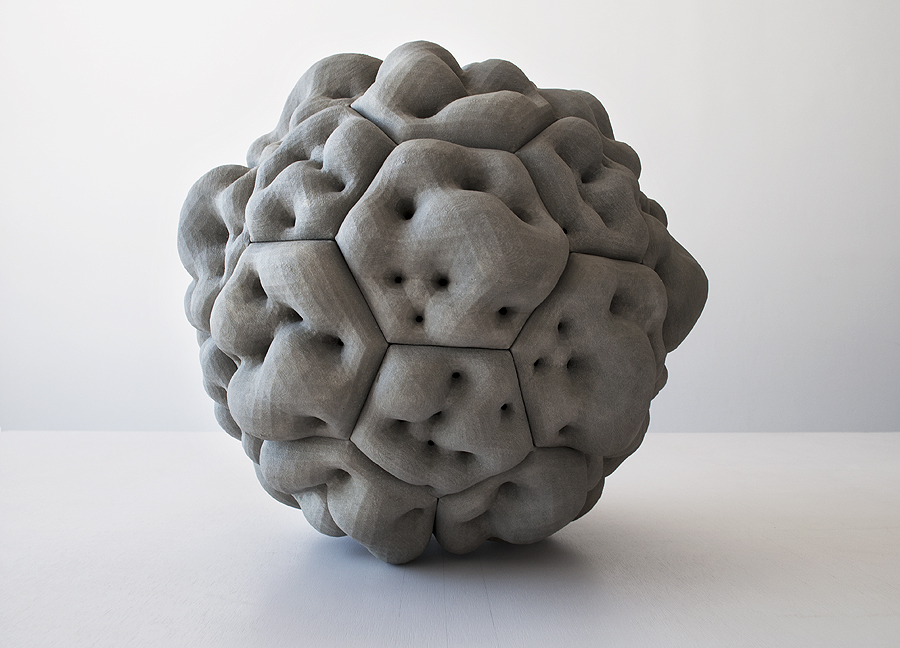
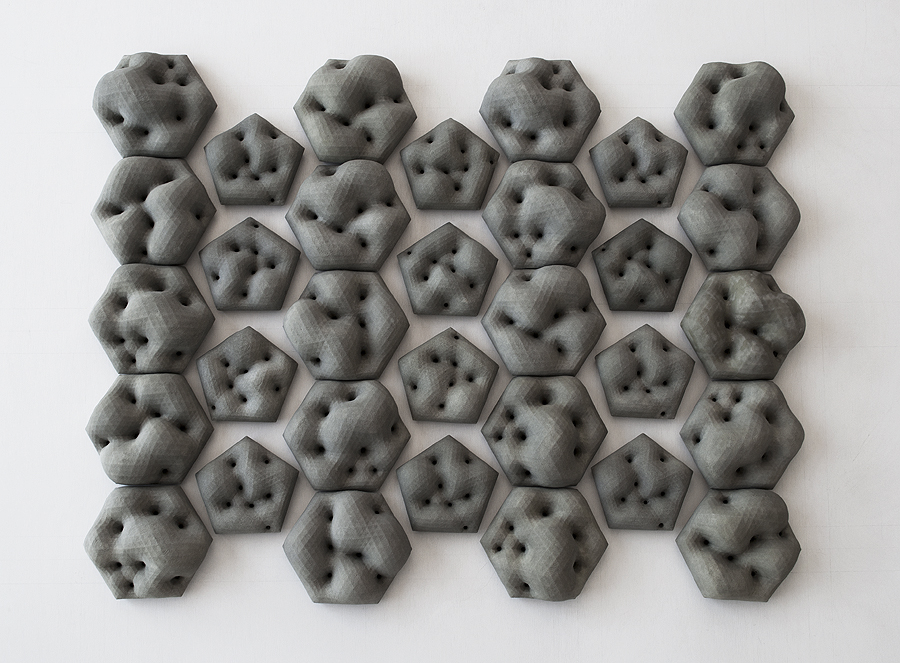
Or take the bizarre, ironically very alien results from a straight-forward exploration of egg shapes. Called “SEAcraft Eggs“, and produced by his students at the California College of the Arts in San Francisco, these show what can happen when expected materials are rigorously and systematically swapped out in new and unexpected formal combinations.
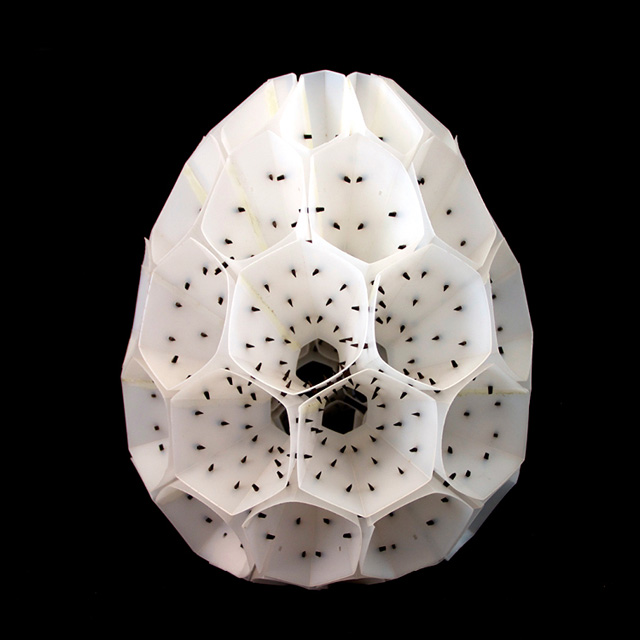
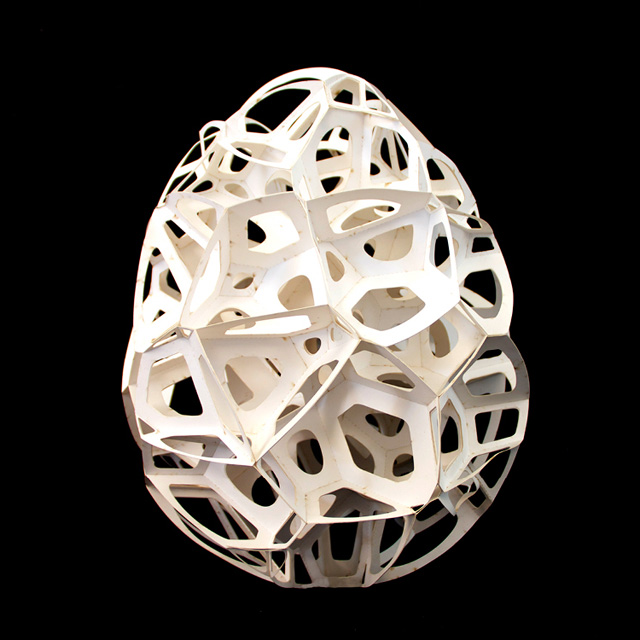
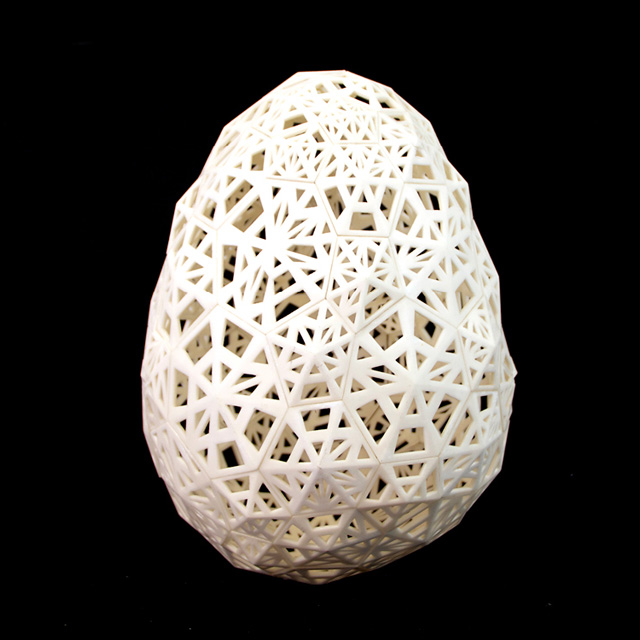
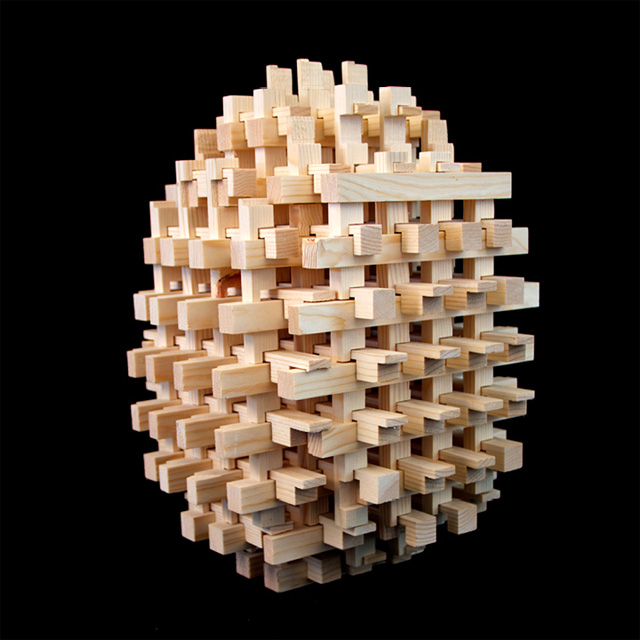

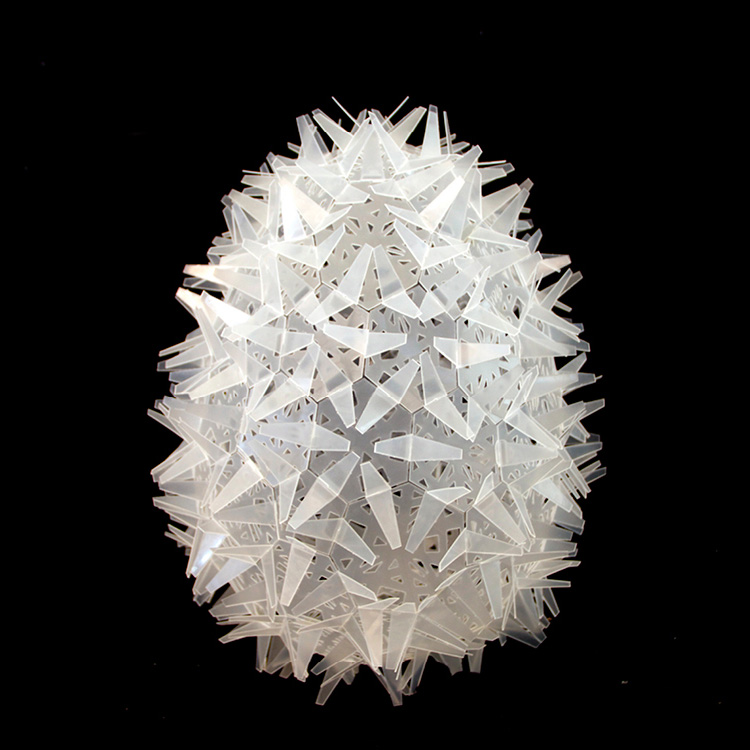
In all, an organic approach is key, with a twist; instead of setting out with a by-the-book blueprint, Kudless establishes certain physical constraints with the help of algorithms and computer simulations, then lets the materials do their thang, interacting in unexpected ways that result in an unpredictable physical result.
The “Chrysalis (III)” lamp, for instance, is a big, weird, coiling coral form of glowing geometric cells made from paper-backed wood veneers, and the eruption of each individual cell — its size, its placement, its angle — could never have been guessed in advance. It’s like living maths, emitting light.
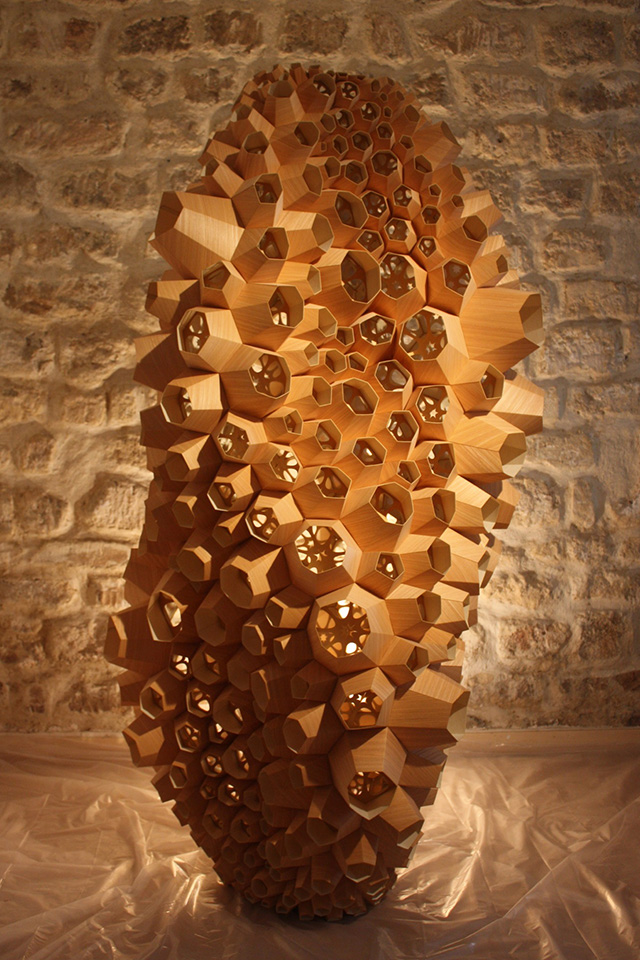
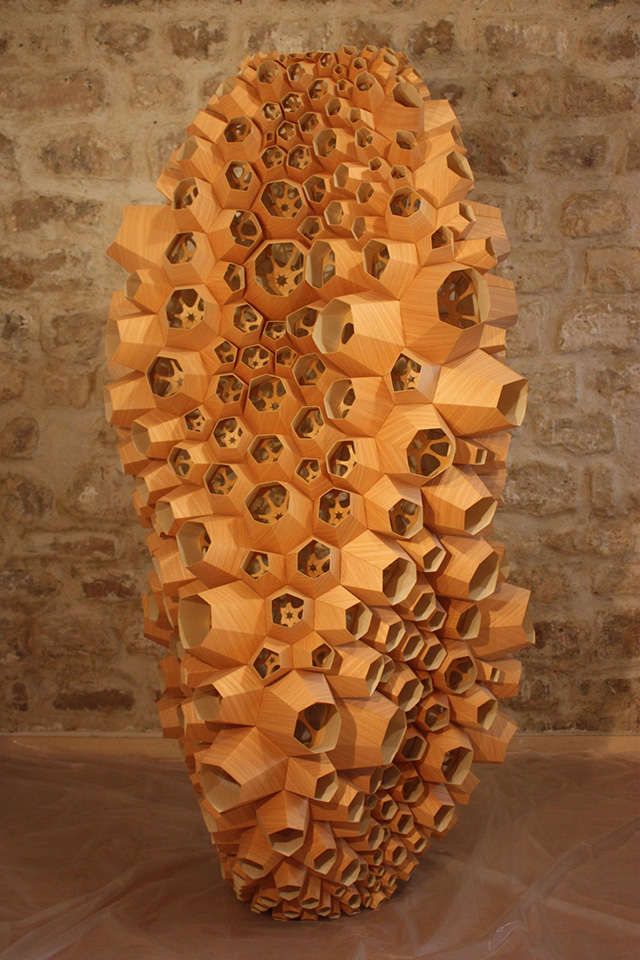
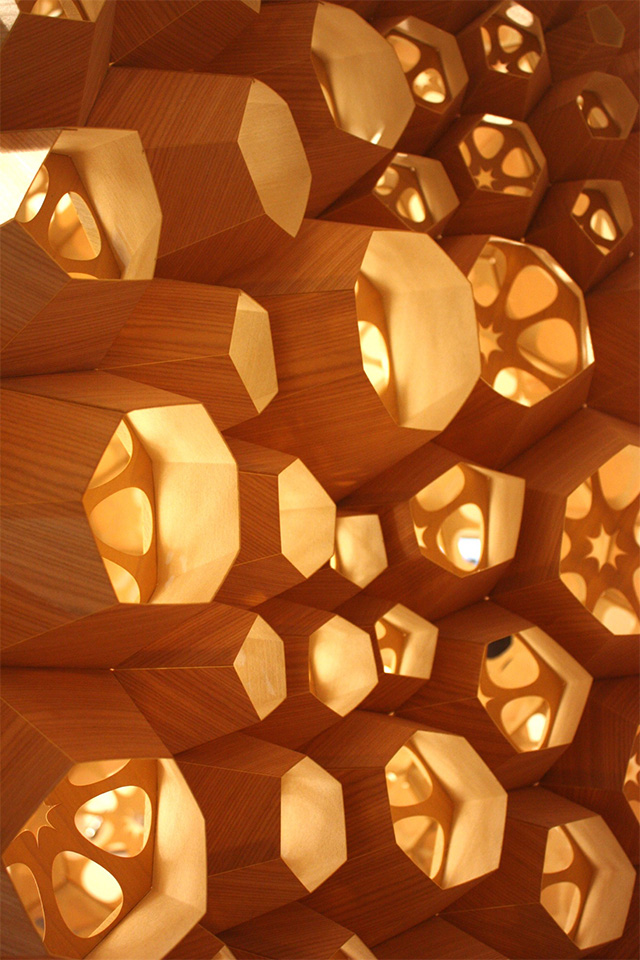
“My work is not perfect,” Kudless says. “And I’m not trying to get it perfect. I’m much more interested in having it speak for itself.”
Check out some of his coolest stuff below.
Shellstar Pavilion (2012)
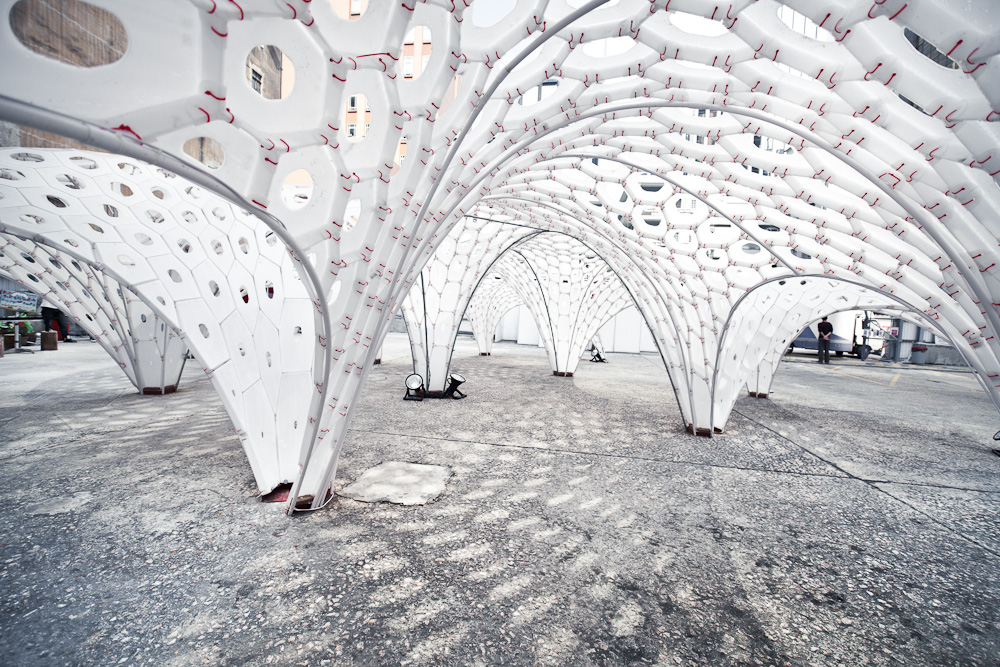
The catenary-like undulations of this temporary pavilion in Hong Kong — seen here in photographs taken by Dennis Lo — were formed by parametric modelling, then put together by hand.
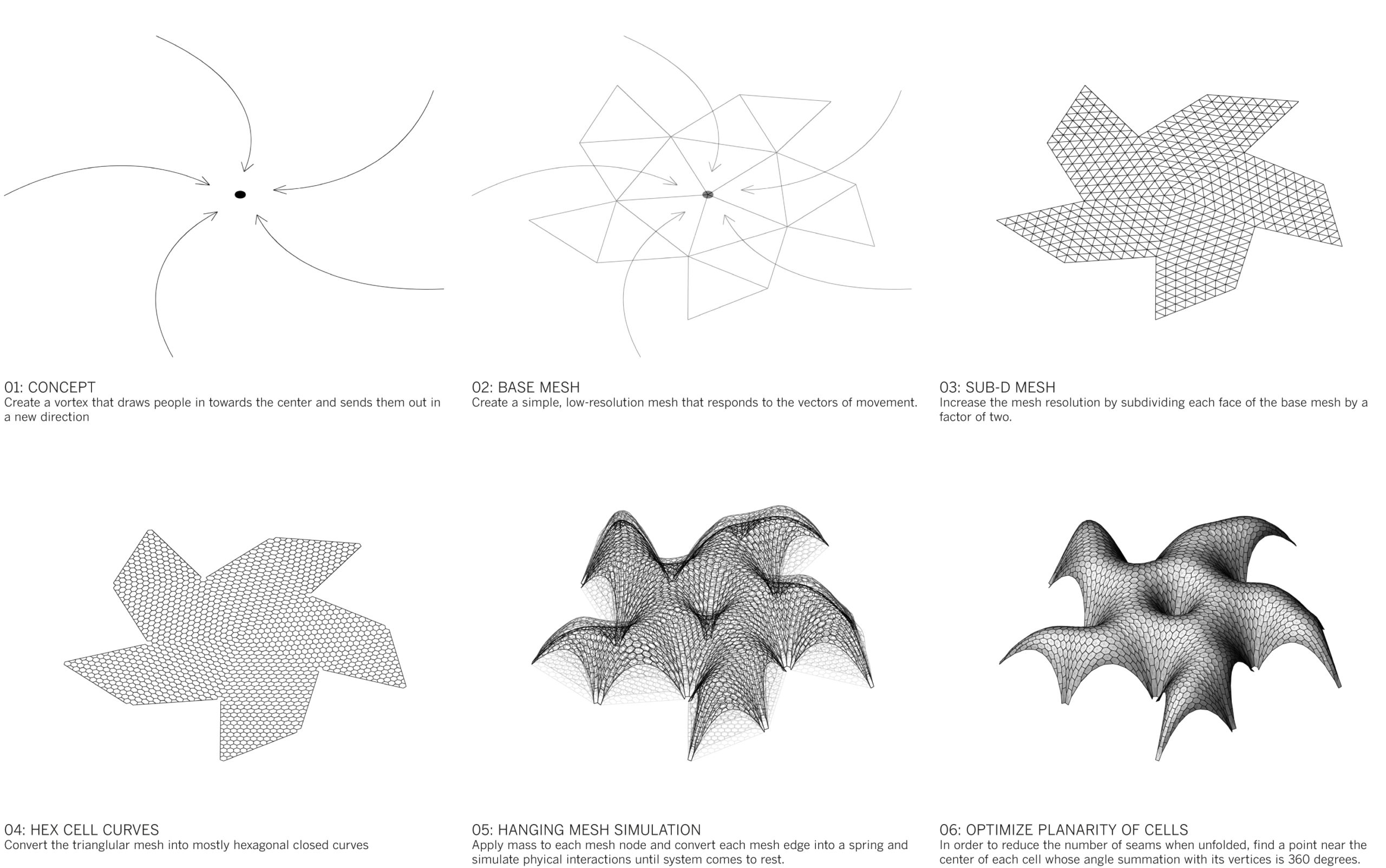
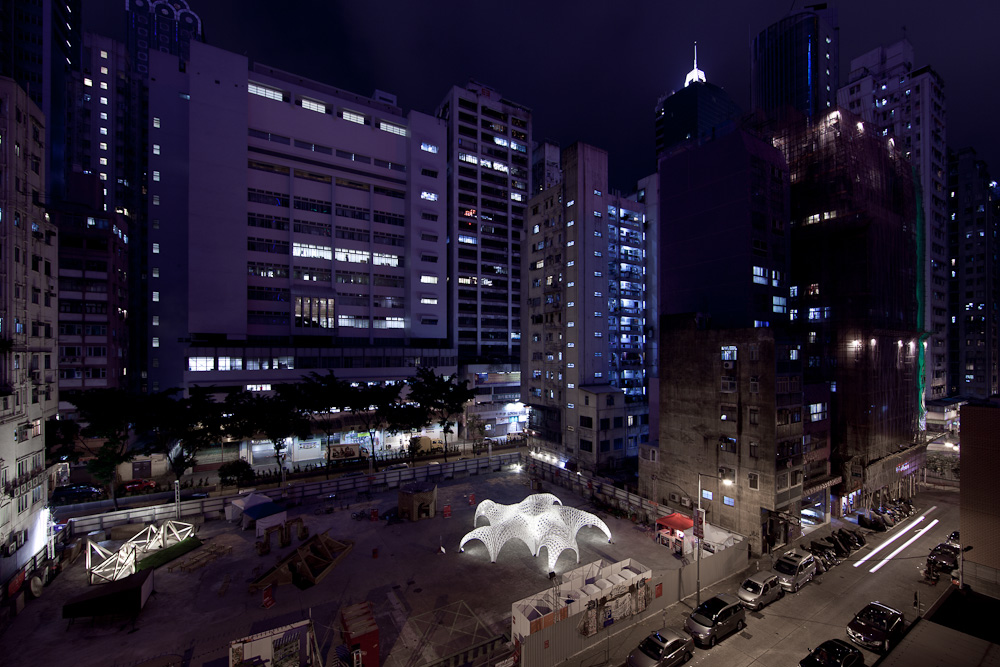

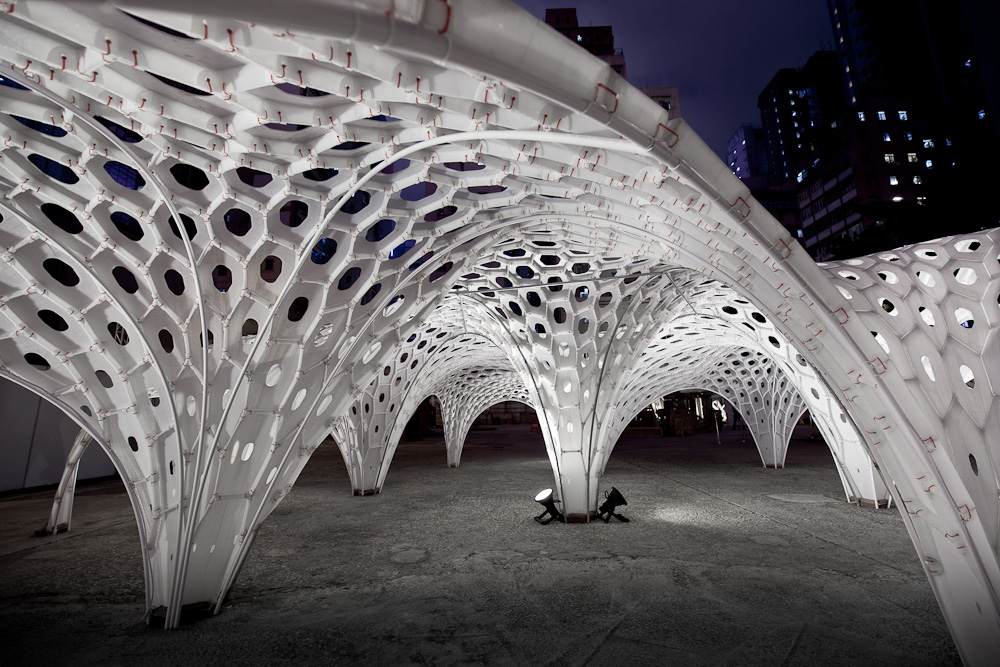
Zerofold Screen (2010)
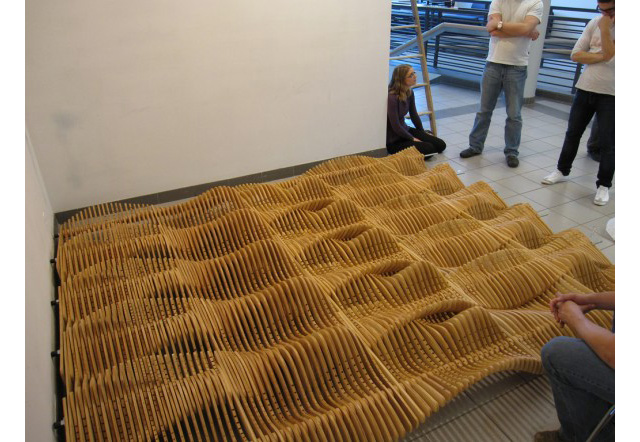
Material waste is a massive problem in the architecture and design industry — offcuts and seemingly useless scrap are byproducts that often get tossed in the pursuit of a final product. Here, Kudless wanted to show the creative potential inherent in starting a project by instead considering a specific material’s dimensions.
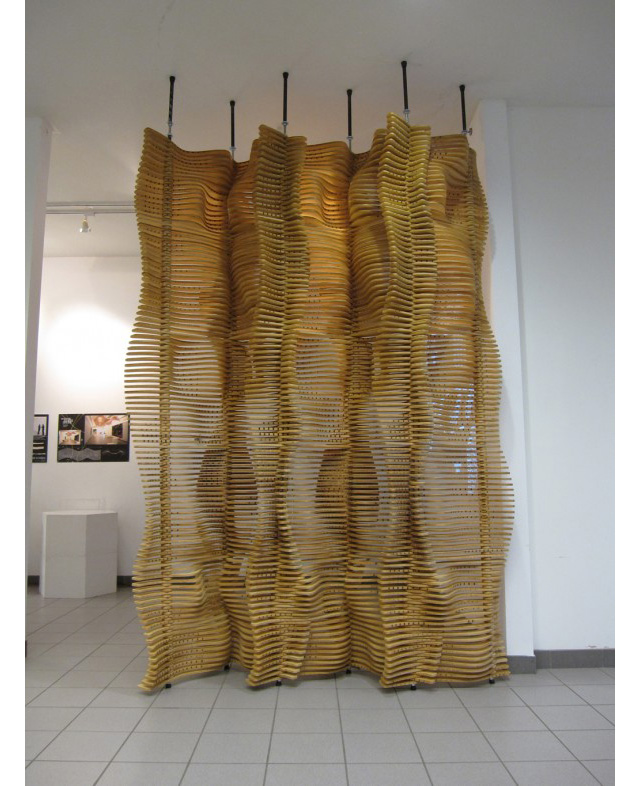
These sheets of wood were CNC-milled in a variety of curvy shapes, then joined together to form a swervy, one-of-a-kind screen. Look ma, no waste!

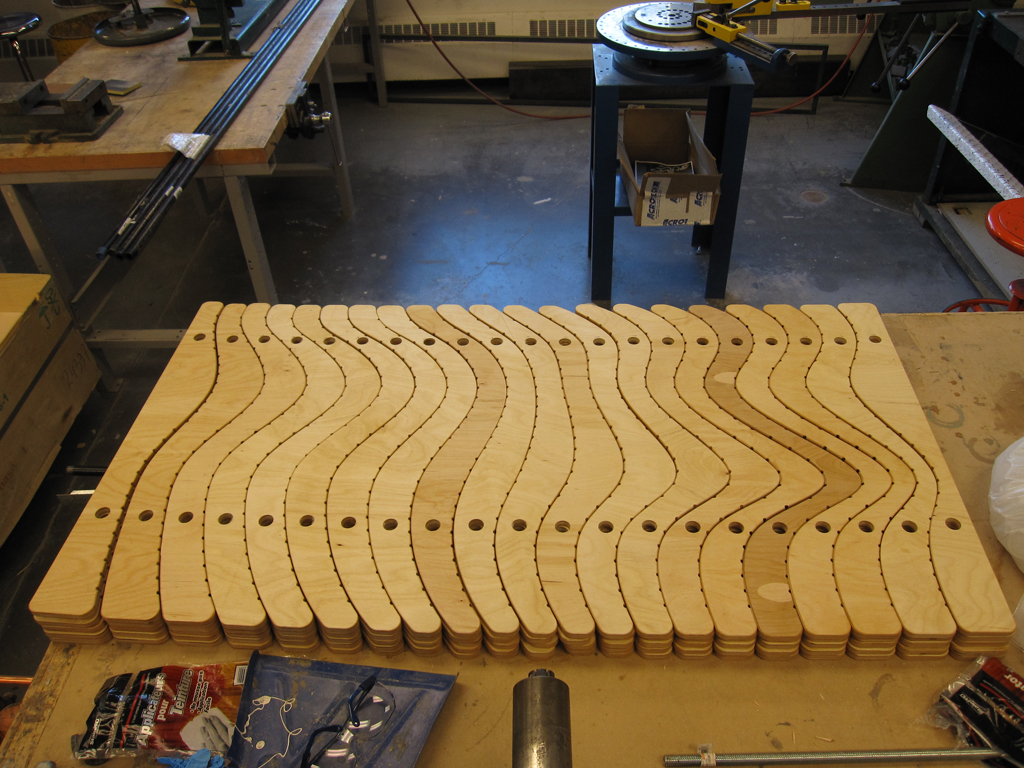
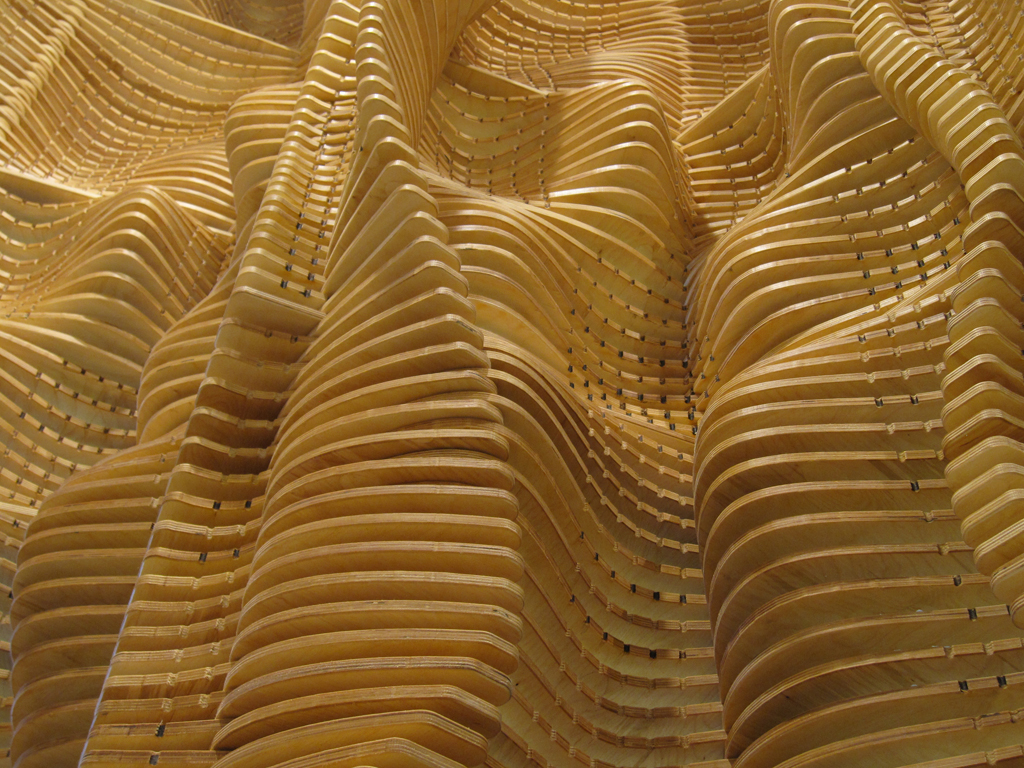
P_Wall (2006)
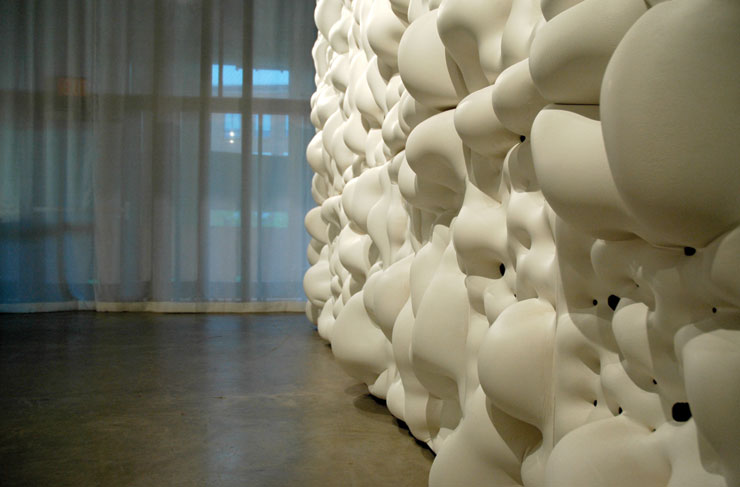
Kudless has been developing his P series for years. In this original incarnation, he first generated a flat pattern from a point cloud. He then set up a horizontal framework where each of these dots became the position for a dowel, over which a sheet of lycra was laid. Plaster slurry was poured in, which shifted, sagged, and formed this bulbous 3D installation.

P-Wall (2013)
This is the latest evolution in Kudless’s P-series. He used digital simulation models to approximate what the work would look like, made rubber molds of the finished plaster casts, then fabricated the thin shell panels in concrete at Concreteworks.
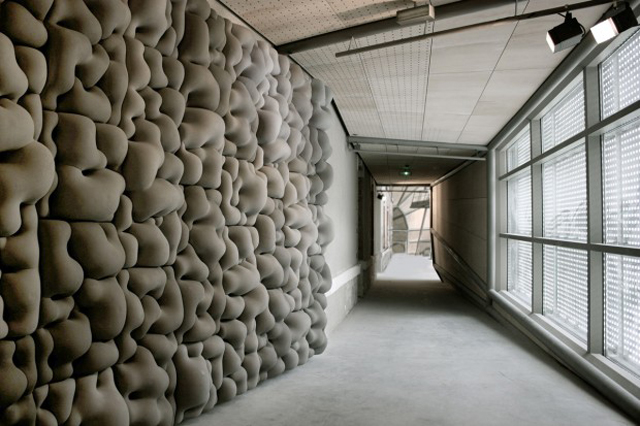

Spore Lamps (2013)
The laser-cut wood micro-veneers that make up this lamp series emit a faint glow from the inside out, and their random orientation allows them to be hung or clustered on a floor or table in any kind of orientation — there’s no “right” way to display these babies.
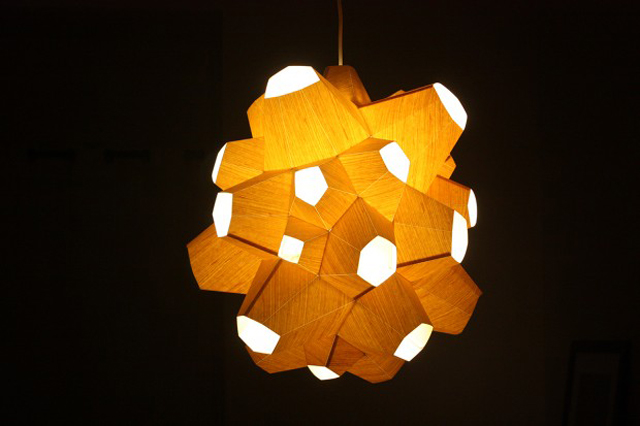
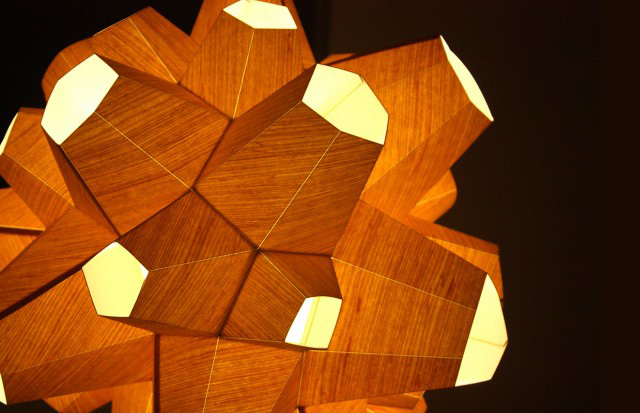
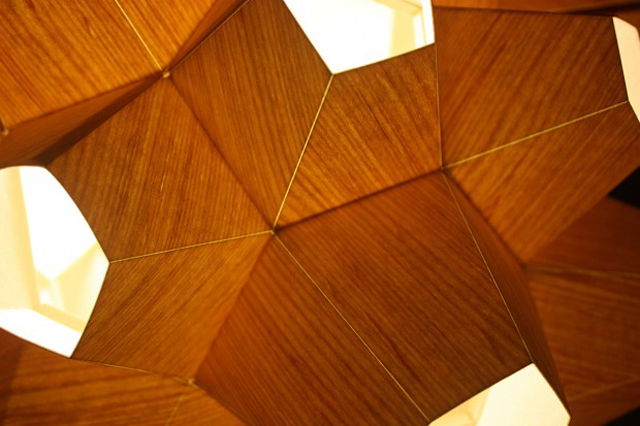
Sietch Nevada (2009)
A bit of an anomaly among the other projects here for being purely speculative — just some computer graphics and an idea — the eye-popping, what-exactly-is-it “Sietch Nevada” project was partially inspired by Frank Herbert’s scifi novel Dune. Rendered here by Nenad Katic, the polygonal underground city treats architecture more as a system of shapes emerging from the ground, responding to the presence (or, more likely, absence) of groundwater in the Nevada desert.
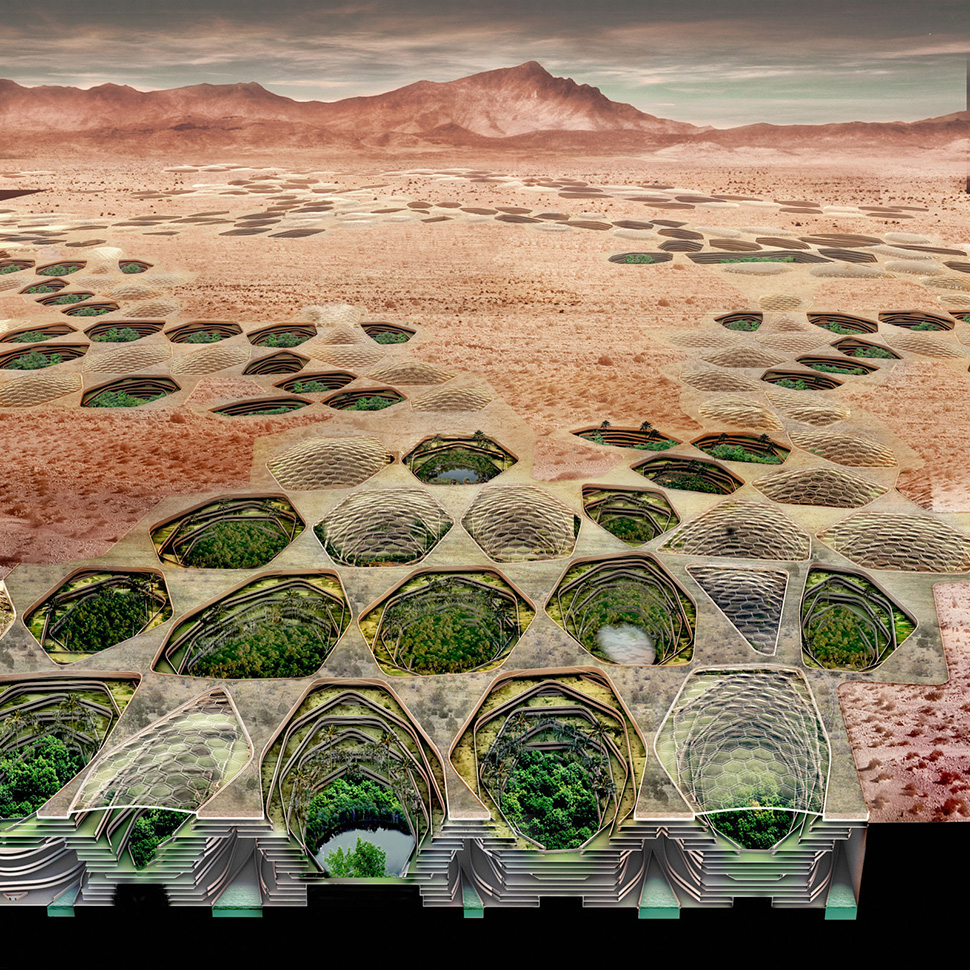
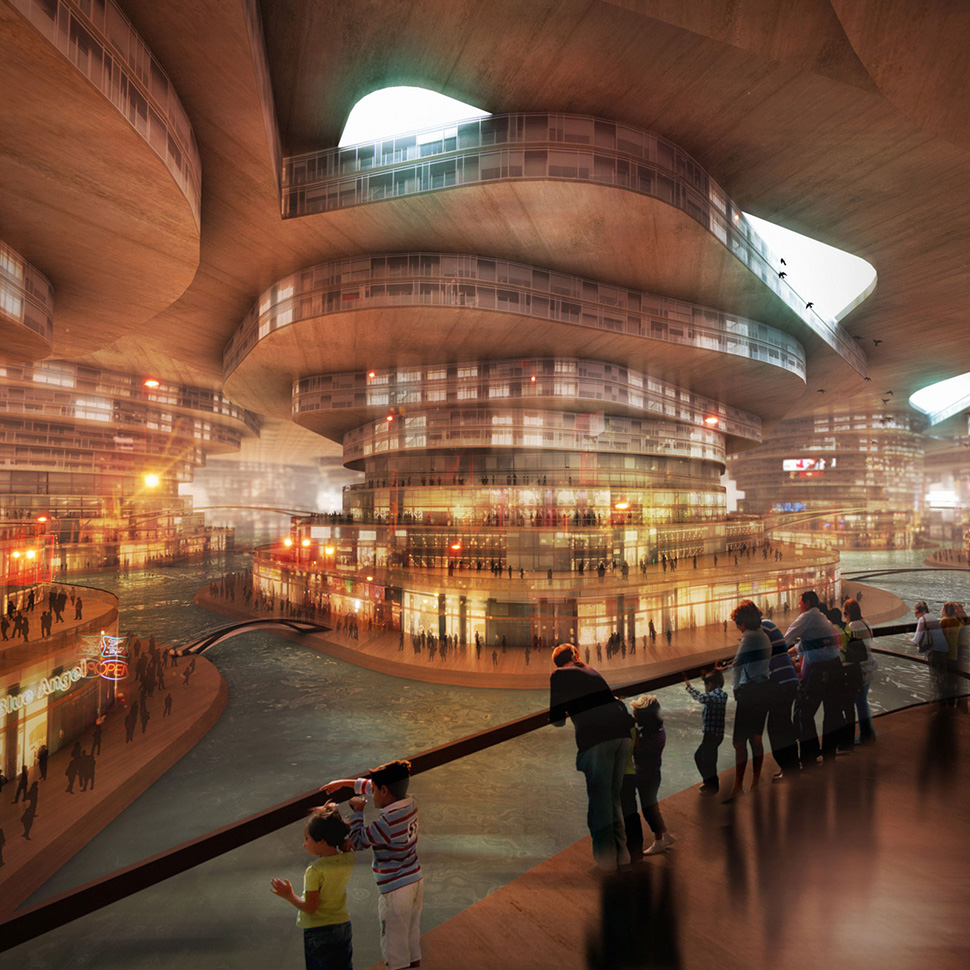

Top picture: Dennis Lo
